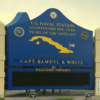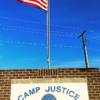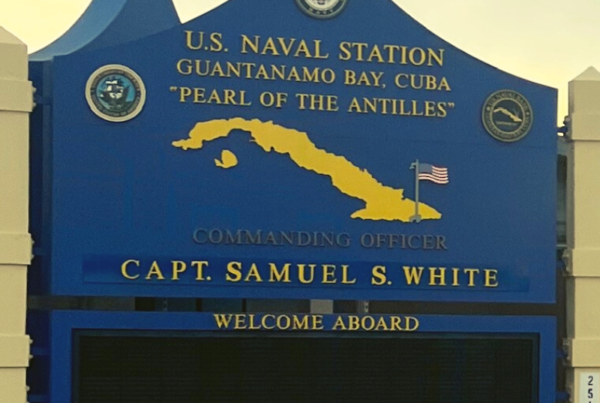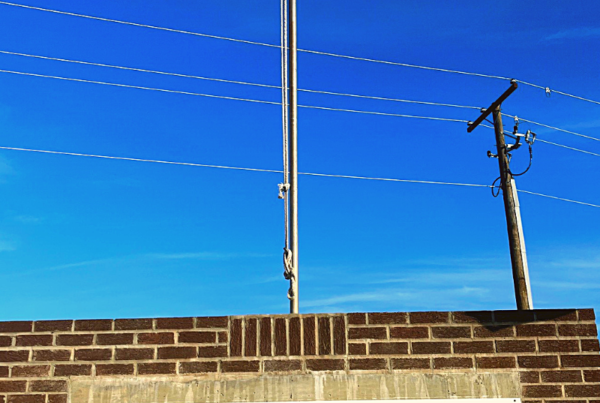A lone mango tree sprouts up from a sleepy street in Morazán, El Salvador. It is a chilling reminder of the exact location where twenty-four members of Maria del Rosario’s family were murdered and mutilated during the civil war more than forty years ago. Their bodies were buried in mass graves beneath the ground, near the tree that still gives life.
“Some we never found,” she says softly, staring at the time-weathered photographs taped to the tin wall of her cement home.
El Salvador descended into civil war in March 1980 when Archbishop Monsignor Oscar Romero, who appealed to the United States to stop financing the government’s army, was assassinated. Ultimately, the brutal conflict was between impoverished Marxist rebels and the wealthy and repressive El Salvador government but the number of civilians caught in the crossfire is alarming.
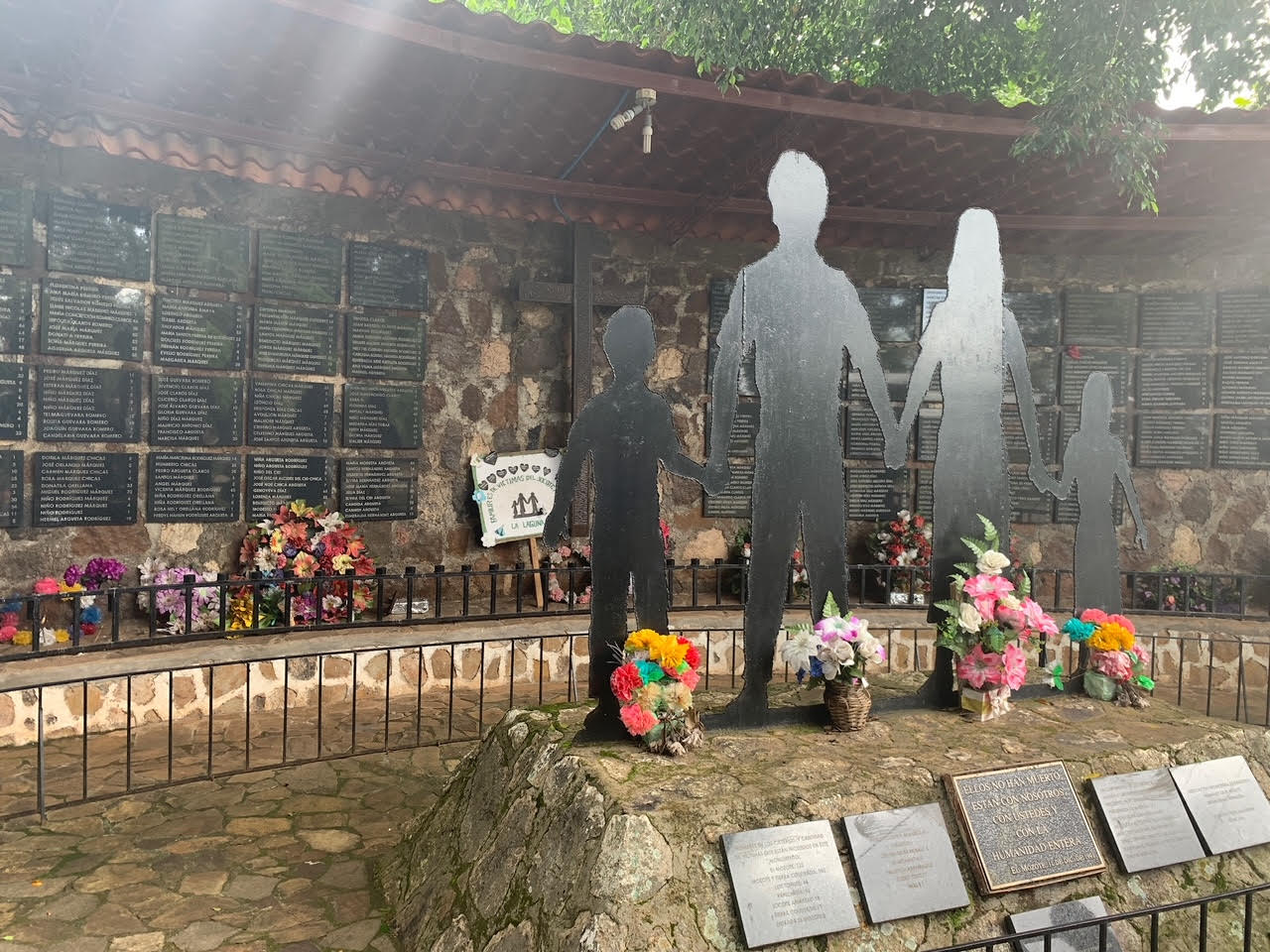
Maria remembers how insurgents always came to her door, tucked deep in the rugged hills. They would demand corn, beans, and bread, even though they knew she couldn’t feed her own children. However, she did everything they asked of her. On a Sunday morning, when she had to walk to a nearby village to see her family, and her husband stepped out to bathe in the river, the guerillas stormed her home and took her fourteen-year-old son Eugenio to training camp.
“I dropped all my stuff and went running for him. I begged the commander. I reminded him how I had given them food when I had none, so they would not take away my only son,” Maria tells me, sobbing into a tea towel and pulling at chunks of her silver hair. “But (the commander) told me Eugenio could not leave; those wars were not won with bread and corn.”
Eugenio survived the worst of the battlefield battles for six long years before he was killed by enemy fire hidden in the mountains. Maria suffered many miscarriages as the fighting raged, including a near-term stillborn that nearly cost her own life – and then saved her all the same.
“It was late in the night, and I could feel it happening. My husband ran out into the night and came back with a doctor from Mexico,” she remembers. “They had to operate, and I had to stay alive for my other children.”
The men made a bamboo stretcher to transport her to the makeshift clinic. In Maria’s account, ethereal spirits helped her cross the frontline as she delivered a dead infant.
“They kept stuffing towels inside me, worried I would die from an infection, because the bleeding would not stop,” Maria continues. “And then I passed out.”
While she teetered on the edge of death cocooned in the remote medical clinic, the town of El Mozote was almost erased from the map, along with the cantons surrounding it, including her hometown of La Joya. Maria’s wild hallucinations were jarringly interrupted by the sound of endless gunshots in the distance.
Radio transmissions and voicemails started trickling through the Mozote in the frigid days of early December 1981, warning of something deadly to come. In the early morning hours of December 10, the Atlacatl Battalion of the Salvadoran army invaded the sleepy town and proclaimed all the residents to be resistance fighters.
Death would not come quickly. For most, it was slow, sickening and intended to inflict as much suffering as possible over the next three days. The victims were overwhelmingly children and women. Boys and men were separated from women, girls and children. In a chorus of gunshots, the males were marched into church halls and abandoned houses, tortured, decapitated, or executed at close range.
Children were crammed into empty houses, and women and girls were routinely gang-raped and murdered. They were executed one by one. According to survivors, even animals were slaughtered before military members attempted to eradicate evidence by engulfing the whole town in flames.
One thousand people were killed in the Mozote massacres, at least half of them were children.
It wasn’t until about seven weeks later that the massacre was brought to the attention of the world’s press with articles in the New York Times and Washington Post. Nevertheless, the Reagan administration reported the following day that Salvadoran leadership had taken significant steps to curb the army’s human rights violations and continued its brazen backing.
Yet this concept was far from the truth for many across the burning farmlands.
In her state of crippling pain, Maria hobbled down to the decimated village, only to see soldiers scattering the charred remains of young and old around the haunted mango tree. A burning smell of homes and flesh filled the air late into the night, she recounts, and children screamed in terror. The following week, Maria and her husband found the rotting remains of her sister-in-law – her dress pulled over her head, a grotesque reminder of the sexual abuse she’d endured before being murdered.
“When we started to bury the dead,” Maria says in staccato, unfurling calloused hands. “I found my mother’s head.”
The massacres were just a portion of the protracted suffering laden upon the impoverished people hiding in and around the overgrown hilltops that became the guerilla stronghold.
“I am proud to say that I lived the entire war here; that I never left,” Maria stresses, her face contouring as she shifts her weakening body, still tinged with shrapnel from a 1983 attack that struck her as she ran from the cave in which she was hiding.
Morazán is still plagued by a sense of timelessness, as if they will never really be able to emerge from the dark dormancy of war. But many survivors are now coming out from the shadows to share their stories.
At eighty-five, Virginia Luna Arguta’s flashbacks are still raw, still bleeding – the kind of wound that never closes, that she no longer wants to close for fear of forgetting. Virginia lived a simple, albeit peaceful, life before the conflict. She never learned to read or write and instead was taught how to weave hammocks, sew dresses, and cook tamales and tortillas from a tender age to help her family get by. Virginia’s arduous work continued even after marriage and having children of her own.
But when her sister-in-law was brutally slain while out collecting firewood and mortars crashed around her own flimsy farmhouse, a heavily pregnant Virginia embarked on the dangerous 190-mile journey through the winding slopes towards the Mesa Grande refugee camp in Honduras. She begged her mother to join, but she refused to leave the only home she had ever known.
In May 1980, amid the fight for her life, Virginia slipped into labor. She was all alone. Under the moonlight and trying her hardest not to make noise, she made a small clearing by the mountainside, pulling out her daughter. Virginia continued to flee with a wailing newborn in her arms. Nevertheless, she was propelled to her knees when shrapnel from a mortar struck close by, kicking up into her stomach and slicing the umbilical cord that had not yet been removed.
“Til now,” Virginia moans, touching her abdomen. “It is very painful.”
Soon thereafter, her mother, their homes, and possessions, would be butchered and burned to the ground. That was not all Virginia lost in the war. She lost nine years of her life roaming anxiously through the Honduras refugee camp, clinging to the radio for news and names of the dead. She also lost three of her six children.
Forcibly recruited to become a rebel fighter when she was just twelve, one daughter was shot through the chest a year later by government troops in a rainstorm. She lost a baby son to a tetanus infection. When Virginia speaks about her son, her expressive eyes drop to the floor. At some point in 1982, she received word via radio that the fifteen-year-old boy was dead.
“They (soldiers) found him wounded, and they tortured him, and then they butchered him,” Virginia says tearily. “I don’t even have a single picture of him.”
And for Alba Ignacia del Sid, 71, the painful war memories are slowly stealing her sanity, she admits.
A thirty-something mother with four young children when the battle broke out in and around her small hut in Mozote, Alba recalls being pinned under overhanging rocks as helicopters bombed overhead, before escaping into a nearby home filled with mostly child survivors on December 11, 1981, as the slaughter in the nearby Mozote villages raged on.
Hovering around the small radio, Alba soon discovered that signs of life in the towns were next to zero. Some twenty-two days later and on a desperate hunt for food, Alba crept down the crooked road, only she cannot unsee what she saw. The recollection sends the woman into a spitball of aimless chatter.
“I was finding bones all over, dogs running around with the human bones, babies’ heads and skulls of every size,” Alba croaks. “My family of forty – cousins, uncles, sister, all killed. I expect that maybe people would die in combat during a war, but why did people die like this?”
The civil war, in which more than 75,000 people were slain and at least a million displaced, ended with a peace accord in 1992 between the government and the Farabundo Marti National Liberation Front (FMLN). Yet few found any semblance of serenity in the aftermath as crime and homicide rates soared.
Questions still swirl about the role that the United States played in bolstering the government’s forces and the degree to which it is to blame for the unrest that still rattles the nation of 6.4 million.
“The war was a key battleground for the U.S. in resistance to Soviet and Cuban-backed communist movements across the region. The U.S., by training and advising the Salvadoran Army, was able to effectively help it to fight the FMLN to a standstill,” says Evan Ellis, a research professor of Latin American studies at the U.S. Army War College Strategic Studies Institute. “In the process, it validated and developed some important elements of U.S. counterinsurgency doctrine, but also exposed serious limitations in what such doctrine could achieve against a determined enemy able to embed itself within a portion of the population.”
Yet, the path to justice and accountability has been essentially non-existent.
In 1993, the year after the war ended, the government created amnesty legislation exempting soldiers and higher-level chiefdoms from prosecution.
Documents and evidence about the state-sanctioned abuses were destroyed, the victims claim. Further, many survivors did not report the abuses and torture inflicted upon them even after the fact, for fear of military reprisal. While both sides contributed to the recruitment of child soldiers and to a staggering number of deaths, some 85% of the bloodshed was at the direction of the Salvadoran government, according to a UN Truth Commission report.
The Supreme Court deemed the amnesty law unconstitutional in 2016, paving the way for voices to be heard. Last May, El Salvador held a trial to shed light on what caused and contributed to the massacres in Morazán, as well as how the United States – during the height of its anti-communist foreign policy – covered up the gross violations of international law committed by the U.S.-trained and equipped army.
Seventeen military officers have been charged with orchestrating torture, rape, murder and forced disappearances. The trials are only in the discovery phase, and it is not clear exactly when they will formally commence. In addition, several court-ordered cases linked to the war are technically “open” – including probes into Archbishop Romero’s assassination.
However, critics vow that there has not been sufficient action. But there is a small slither of light amid the dim landscape.
In February, forensic experts began exhuming the remains of at least sixteen Mozote victims – primarily children – slain by soldiers and buried in two mass graves more than four decades ago. Argentina’s EAAF forensic anthropology unit is billed to begin the identification process using DNA technology.
During the war, many surviving children were also given up for adoption, and El Salvador has not maintained a complete forensic database to enable the examination of genetic comparability between relatives and the missing.
Nevertheless, in recent months, a team of researchers from the Genomics Service at Universitat Pompeu Fabra (UPF) and the Institute of Evolutionary Biology (IBE), a joint center of the CSIC and UPF, has developed its own database as something of a tool for reunification.
There is still a great deal of collective denial about what happened in the remote foothills in the northeast of the country despite the unmarked graves that still dot the ancient hills, the pained testimonies of scores of survivors, and the images that depict distressed faces and broken bodies.
“I have a military background, so I have a different view of what happened,” a business owner told me sharply from the popular beachside area near El Zonte.
The widely prevalent conspiracy theory claims that guerillas were behind the deaths, staging the murders in order to discredit the image of the government. Additionally, the Armed Forces have stated that the fighting did not involve civilians but was strictly between the soldiers and the rebels. Nonetheless, Maria has found some sense of solace in becoming one of the most active in her community to testify about what transpired during the conflict. She has gone to Ecuador multiple times and even faced some of her alleged military perpetrators face-to-face.
“I suffered from both sides in this conflict. Nobody has ever been held accountable,” she whispers, sitting in the darkness of her humble brick home, framed by slivers of sunlight through the cracks and chickens pecking at her feet. “We want justice. We will not stop until they are punished and get what they deserve.”
Other people, like Alba, consider peace to be a mythical ideal. Following the signing of the 1992 Peace Accords, she disappeared into the coffee fields to work and work, blocking out the woes of the world.
“I don’t know what justice is,” Alba adds, rubbing restlessly on her left knee. “But if the people who did this are alive, they should at least suffer a little for what they have done.”
The hearings are also occurring at a time when the Biden Administration is putting pressure on governments in Central America to clean up corruption and transnational crime. Moreover, the trials have sparked a citizen push for an apology from Washington for its involvement in the twelve-year conflict. El Salvador still bears the scars of a country beleaguered by war and violence to this day, a land of fierce surf, raging volcanoes scattered around the Ring of Fire, overgrown jungles and primitive shacks dotted along mountain ridgelines.
Romero’s gentle face is still plastered across walls and monuments nationwide, a symbol of a country still pained by its bitter history.
Dead bodies discarded by roadsides or floating in waterways remain commonplace. Gangs such as 18th Street and Mara Salvatrucha – better known as MS-13 – control most neighborhoods. Domestic and sexual violence runs rampant. Each day, swaths of the poor population embark on a dangerous journey toward the U.S. border in a desperate quest for a better – or only – chance at a longer life.
For many, it is a searing reminder that El Salvador’s problems and the subsequent border crisis are not outgrowths of domestic problems alone.
“The war itself transformed the country, not only through its violence but through displacing over a quarter of the country’s population, largely to the United States,” adds Ellis. “Both deepening the human connection between El Salvador and the U.S., but also contributing to the legacy of the Maras, which emerged out of that diaspora, as well as the deeply flawed reorganization of the police that came with the peace accords.”


